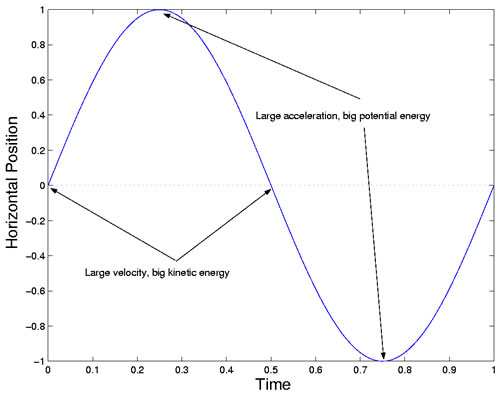Expertise:
Intermediate
The Energy in the Nondurable Goods Index
The concept of energy plays a role in many fields besides physics, but often
implicitly. Defined as the capacity to do work, energy is surely also relevant
to studying the U. S. economy, and the nondurable goods index is intended to
directly reflect work done.
Work in turn is defined as the application of force through distance and,
since Newton has explained to us that force is proportional to acceleration, we
finally conclude that energy should be reflected in the acceleration of the curve,
which itself is designed to show the instantaneous status of something like the
amount of goods that have been manufactured, and therefore corresponds to
the physical notion of position.
Energy is considered to reside in one of two states: potential meaning unused
capacity for work, and kinetic, meaning work actually being done. The favorite
examples of physics instructors are springs and pendulums. Figure 1 plots the
lateral position of a pendulum, with zero indicating the position of the pivot
point. This curve is, of course, a sinusoid, and the Figure plots sin(2πt) over
the interval [0,1].

Figure 1: The horizontal position of a swinging pendulum, with zero corresponding
to the pivot point Potential energy is maximized when acceleration is
high, and kinetic energy is maximized when velocity high.
Potential energy is associated with high acceleration; the pendulum is at rest
at each end of its swing, but there the force of gravity is exerting its maximum
force and the acceleration downward is at its highest. Kinetic energy, on the
other hand, is associated with high velocity; the pendulum is passing through
zero with high velocity but zero acceleration. In other words, potential energy
is associated with the deviation of the sine curve from zero, and kinetic energy
with where it crosses zero.
|
